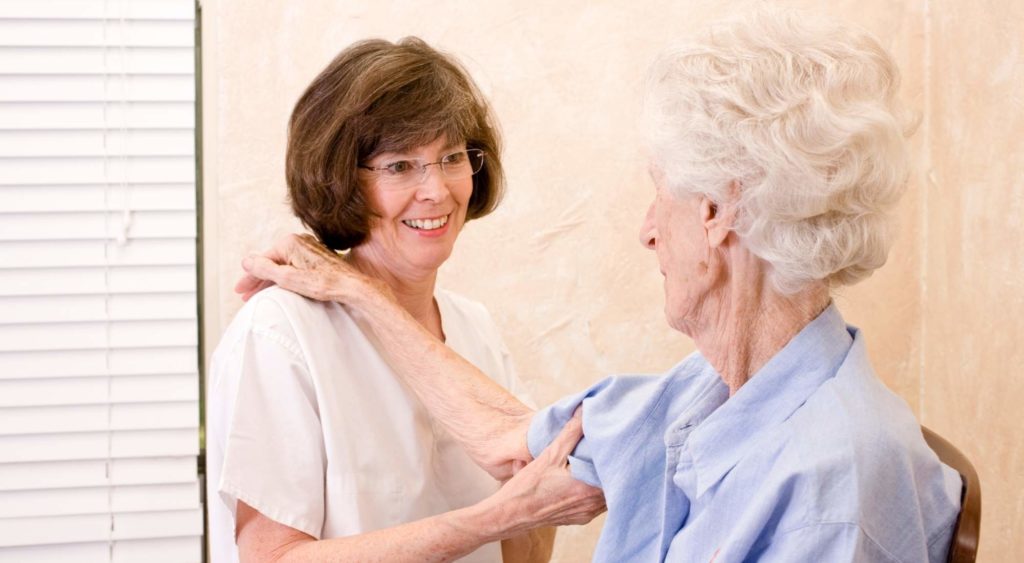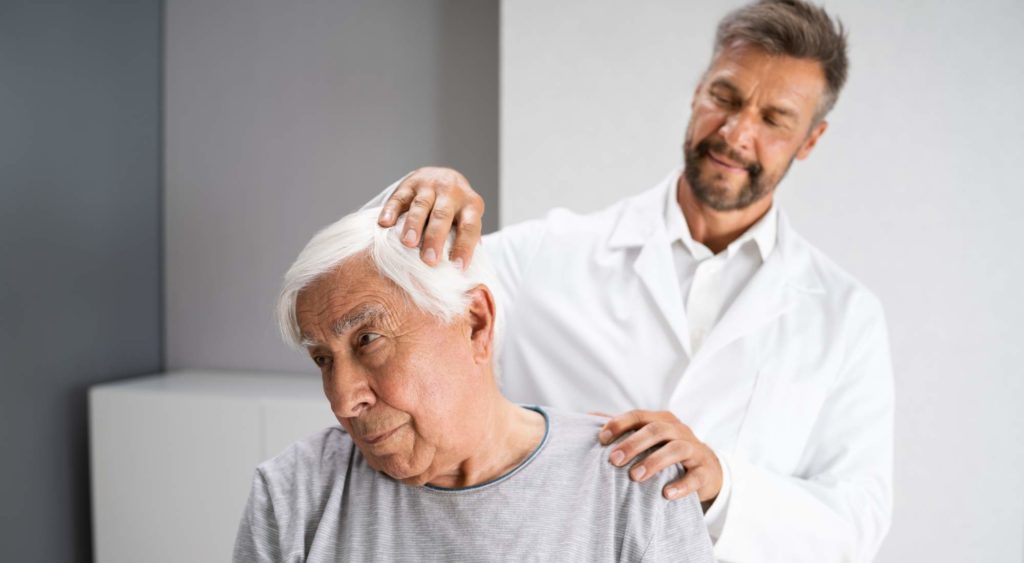
Living with arthritis can be a literal pain with every step you take, every move you make.
As the leading cause of disability, millions of people cope with daily arthritis pain.
Whether you’ve lived through some wear-and-tear or you received your arthritis diagnosis early on, you don’t have to accept living with this painful condition day in and day out.
You may associate physical therapy with injury or a life-threatening event like a stroke or heart attack, but physical therapy has also been proven to be an effective treatment for arthritis pain.
Imagine a regular visit to your physical therapist can get you up and moving efficiently and more comfortably.
In this guide, you’ll learn everything you need to know about treating your arthritis with physical therapy including:
- How does physical therapy help arthritis?
- How can a physical therapist implement a treatment plan to slow the progression of arthritis and relieve symptoms?
- What physical therapy activities help with arthritis?
- How effective is physical therapy for arthritis?
Table of Contents
- Can You Treat Arthritis With Physical Therapy?
- How Does Physical Therapy Help Arthritis?
- What Physical Therapy Activities Help Arthritis?
- How Effective Is Physical Therapy for Arthritis?
- Look No Further Than In Motion O.C. for Help With Your Arthritis Symptoms

Can You Treat Arthritis With Physical Therapy?
Although there isn’t a cure for arthritis, pain from arthritis can be managed and in many cases, relieved with physical therapy treatments.
The goal of physical therapy is to improve the body’s ability to engage in movement.
That can be anything from:
- Getting up and down from chairs
- Climbing stairs
- Opening a jar
- Walking in your neighborhood; or
- Doing recreational activities
Whatever it is, physical therapy can help you get moving safely and comfortably.
How Does Physical Therapy Help Arthritis?
Physical therapy for arthritis works to strengthen joints that have been weakened by damage and inflammation.
Physical therapy exercises can help improve joint pain, stiffness, range of motion, and mobility.
Continue reading to learn more about the protocol that many physical therapists implement in their daily work to help arthritis patients.
#1: Physical Therapists Can Identify the Contributing Factors for Specific Areas of Arthritic Pain
The two main types of arthritis are:
- Osteoarthritis — the most common form of arthritis. It results from wear-and-tear damage to your joints’ cartilage which acts as a cushion to the ends of the bones. This padding normally allows for smooth joint movement. Erosion of the cartilage can result in bone grinding directly on bone, causing painfully restricted movement. The erosion can happen over many years, or it can be brought on by a joint injury or infection.
- Rheumatoid arthritis — an autoimmune and inflammatory disease in which the body’s immune system attacks the synovial membrane, which acts as a lubricator enclosing all the joint parts. The lining of the joint capsule becomes inflamed and painfully swollen. The process can eventually destroy cartilage and bone within the joint.
In cases of osteoarthritis, repeated physical movements over time contribute to the wear-and-tear of the cartilage.
An experienced, licensed physical therapist can attribute the root cause of your osteoarthritis to factors like …
- Poor body mechanics
- Poor posture; and
- Poor core control
… and develop a plan to change your lifestyle and drastically improve your discomfort and quality of life.
#2: Physical Therapists Can Identify Flexibility Deficits Contributing to Dysfunction Caused by Arthritis
Arthritis can make your joints feel stiff and achy.
You may suddenly realize how quickly your ability to comfortably bend and straighten your joints is fading.
An experienced physical therapist will assess your personal body mechanics and identify ways to support optimal joint functionality, improving your range of motion.
Even the smallest improvements in your joint’s range of motion can make a sizable difference in the flexibility and optimal functionality of the joint.
#3: Physical Therapists Can Implement a Treatment Plan to Slow Arthritis Progression and Relieve Symptoms
A physical therapy arthritis treatment plan will focus on stabilizing the joints to improve mobility, relieve arthritis symptoms, and slow the progression of arthritis.
Research shows that arthritis can also be a complex process with many causes.
A combination of factors can contribute to arthritis, many of which can be modified or prevented altogether.
Doctors suggest a healthy lifestyle including …
- Diet
- Exercise
- Sleep
- Managing stress; and
- Limiting smoking and drinking
… can have a tremendous influence on overall health, and the health of your joints.

What Physical Therapy Activities Help Arthritis?
Although arthritis has long been thought of as a senior diagnosis, nearly 300,000 kids and teens are diagnosed with juvenile arthritis.
Physical therapy exercises can be helpful for arthritis patients of all ages.
Activities like …
- Stretching
- Strength and resistance training
- Targeted exercises
- Manual therapies; and
- Massage therapy
… can improve range of motion and strengthen the muscles surrounding joints.
The key to a successful outcome is learning the exercises from a licensed, experienced physical therapist and practicing them at home over the long term.
Improvement is gradual as the body gets stronger and more adept slowly over time, so consistent practice is essential.
Stretching Activities
*It’s important to remember that you should always consult a licensed physical therapist before starting any at-home treatment programs.
It’s critical to include stretching activities to prevent and alleviate pain from arthritis.
You may be nervous about starting any kind of new exercise because of fears that it could exacerbate your pain.
Whether you’ve got a stiff back, crackly knees, achy hips, or other problematic joints, stretching regularly along with range-of-motion exercises can help relieve your pain in many ways.
There are two main kinds of stretches:
- Dynamic stretching involves moving through a repeated range of motion to warm up the joints and muscles to increase flexibility. Some examples of dynamic stretches include:
- Ankle circles
- Arm circles
- Leg swings
- Knee hugs
- Wrist circles
- Static stretching involves holding a stretch for 30 to 60 seconds. You may feel minor tension, but you shouldn’t experience any pain. Some examples of static stretches include:
- Arm raises
- Neck tilts
- Side bends
- Overhead raises
Targeted Exercises
*It’s important to remember that you should always consult a licensed physical therapist before starting any at-home treatment programs.
Targeted exercises are not the same as general strength exercises.
Even though an active lifestyle provides many benefits to arthritis patients, physical therapy isn’t just exercise for the sake of exercise.
Physical therapy prescribes targeted exercises that are focused on movement for rehabilitation that aims to return your joints to optimal functionality.
Studies show that targeted exercises can provide significant improvements in strength, pain, joint stiffness, and overall quality of life in arthritis patients.
Strength and Resistance Activities
*It’s important to remember that you should always consult a licensed physical therapist before starting any at-home treatment programs.
Strength and resistance activities work to strengthen the surrounding muscles that support the joint.
This support helps decrease the painful friction between the joint’s bones.
A skilled physical therapist can identify areas of impairments and teach you how to address these impairments with functional strength and resistance exercises to help improve stability and mobility in your joints.
Manual Therapies
*It’s important to remember that you should always consult a licensed physical therapist before starting any at-home treatment programs.
Physical therapy can target pain through specialized treatments known as manual therapy.
Manual therapy can be described as physical therapist-guided manual movements, with or without the use of instruments, to mobilize joints and soft tissue leading to improved tissue and passive joint movement, and reduced pain and swelling.
Some examples of manual therapies may also include:
- Hot and cold therapy
- Soft tissue mobilization or massage therapy
- Chiropractic care

How Effective Is Physical Therapy for Arthritis?
Physical therapy is only as effective as you make it.
Keeping up with exercises at home and making necessary changes to your lifestyle along with any other recommendations by your physical therapist can put you on the path to success.
Look No Further Than In Motion, O.C. for Help With Your Arthritis Symptoms
Is your arthritis becoming a real pain?
Look no further than the team of licensed physical therapists at In Motion O.C. to help you with your arthritis symptoms. From manual therapies to targeted exercises, In Motion O.C. can help you identify and improve your arthritis symptoms.



